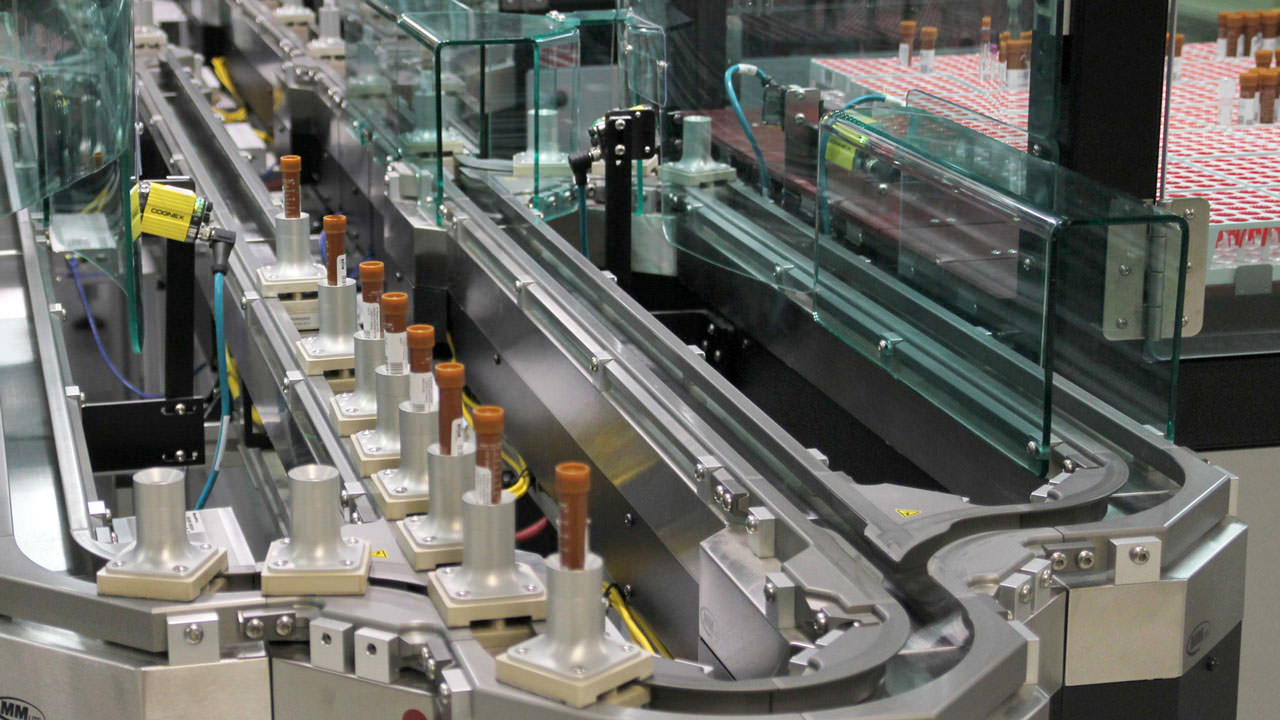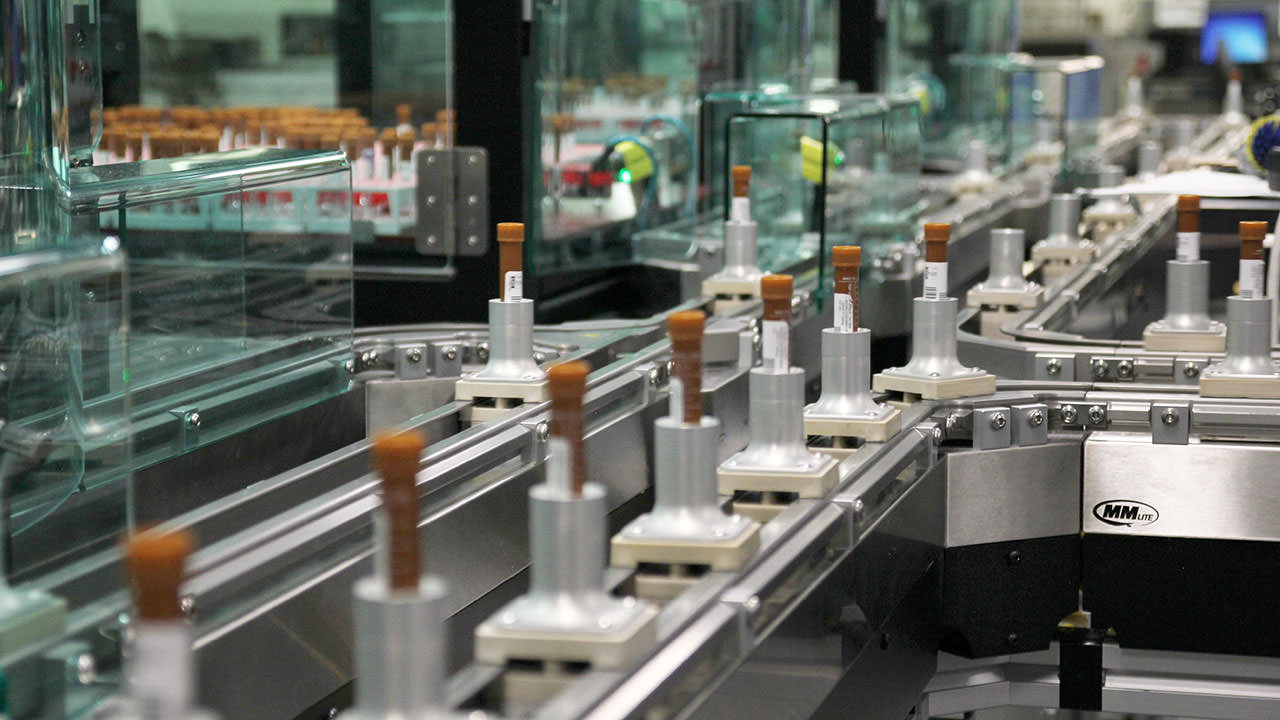ApplicationsSeptember 10, 2018
Smart motion systems: simpler and better performance

More flexible approaches to motion control are abandoning complex mechanical systems to speed up changeovers and boost productivity. Adoption of smart motion systems is growing as manufacturers embrace smart machines that make better use of production information.
DESIGNERS OF MOTION CONTROL SYSTEMS including manufacturing conveyors have long been forced to choose productivity over flexibility. That is because conventional motion systems use a strictly mechanical design approach involving rotary-driven chains, belts and gears. These systems are not only complex, but also rigid, inflexible and challenging to maintain. So while a machine or line may achieve a desired throughput level, changing to a new product can require extensive mechanical retooling.
These systems may have sufficed in the days of continuous production runs, but are no longer adequate. Manufacturers today are producing a wider variety of products and packaging sizes. They need more flexible systems that can accommodate added production variety while minimizing changeovers and other downtime.
Smart motion control systems offer a new way forward. They use new hardware platforms with advanced control algorithms that allow manufacturers to make changes by reprogramming a system rather than retooling it. They also provide greater control when transporting and positioning products to help increase production performance.
One example of smart motion is an intelligent conveyor system that uses programmable independent movers on a straight or curved track. These systems can be scaled to a wide range of needs from high-performance, in-machine production to the transport of products between facilities. And they are already helping reimagine motion applications, from packaging and pharmaceutical production to 3D printing.
Boosting productivity
Smart motion systems can run and accelerate faster than conventional motion systems, and their independent movers can further speed up operations. One packaging equipment builder incorporated a smart motion system with independent movers into its high-speed collating machine. The new system reduced the number of mechanical components and doubled throughput from the previous-generation machine.
Another machine builder used a smart motion system in a new high-speed case-packing machine that packages pouches in a variety of shelf-ready formats. The machine uses the motion system’s high-speed movers to pack up to 60 cases, or 300 pouches, per minute. Most legacy pouch case packers cannot exceed 20 cases per minute.
“You have to see it to believe it,” the company’s president and CEO said. “Packaging stand-up pouches at these speeds really benefits from the use of this new technology.”

Smart motion systems can also track and record each product’s journey through the production process.
Improved flexibility
Smart motion systems are designed for flexibility. Manufacturers can take advantage of software-configured profiles that make toolless product changeovers possible with the push of a button. The systems’ independent movers can transport multiple payloads of varying weights, and manufacturers can add, remove and orient the movers in a wide range of ways based on production needs.
All of this can help manufacturers reduce changeover-related downtime, accommodate a larger variety of product and packaging sizes, and improve the profitability of shorter production runs.
Cama Group used a smart motion system on its new high-speed carton-filling machine. The system uses two carriers to handle products of any size without tool changes. This enables automatic changeovers with no need for manual intervention.
Machine builder KHS also used a smart motion system on its Innopouch K-400 form, fill and seal (FFS) pouching machine. The machine is “pitchless,” with each pouch independently controlled and changeovers completed with the press of a button.
“Instead of using mechanical elements to move product through the machine, we’re now using a magnetically driven device that can adjust its geometry through software,” said Roger Calabrese, research and development manager for KHS.
Increased uptime
Faster changeovers invariably lead to more uptime, but smart motion systems also help increase uptime in other ways.
For instance, they have fewer moving parts than conventional systems, resulting in reduced maintenance demands and downtime. They also make information more easily available to operators, which can help prevent jams and reduce troubleshooting time should an issue occur.
Smart motion systems also can recover faster in the event of an emergency shutdown. In conventional mechanical systems, motors need to return to a home position. Smart systems, however, use absolute encoders on each mover that hold position data and can restart immediately after a shutdown.
Additional Benefits and Savings
In addition to supporting more productive and flexible operations, smart motion systems also offer other key benefits.
For one, they can significantly reduce energy costs. In conventional systems, a whole conveyor must run regardless if it is carrying one product or hundreds of products. Smart motion systems, on the other hand, only apply energy to the specific movers that are being commanded to carry products or hold a position.
Smart motion systems also can help reduce machine footprint on the plant floor. They can combine continuous and intermittent processes – such as printing and assembly – into one machine.
And these systems can also use highly configurable design elements, such as straight and curved tracks, to optimize a machine’s size on a plant floor. Altogether, these design benefits can reduce a machine’s physical footprint by 10 to 50 percent.
Lastly, they can help workers. Fewer moving parts, easy-to-use controls and toolless changeovers all help reduce operational complexity. This can be especially valuable for less-experienced workers, who are not only less familiar with production systems but also increasingly expect operations be more software-driven.
Smart Motion Manufacturing
Adoption of smart motion systems will likely grow in the coming years, as more manufacturers embrace smart machines and seek to make better use of their production information.
Smart motion systems can intelligently manage the flow of a wide variety of products to maximize throughput. They can use built-in self-diagnostics to quickly troubleshoot and resolve stoppage issues. And they allow operators or technicians to quickly implement production improvements via software profiles rather than through long, laborious mechanical changes.
Smart systems also can support greater traceability in industries like life sciences, food and beverage, and automotive. The systems can track and record each product’s journey through the production process. Operators can use this information to know where products are at all times, while quality and compliance personnel can use it to confirm products went through the necessary processes.
All of these capabilities show that smart motion systems can do far more than free designers from being forced to choose productivity over flexibility – they can help motion control be entirely reimagined.

